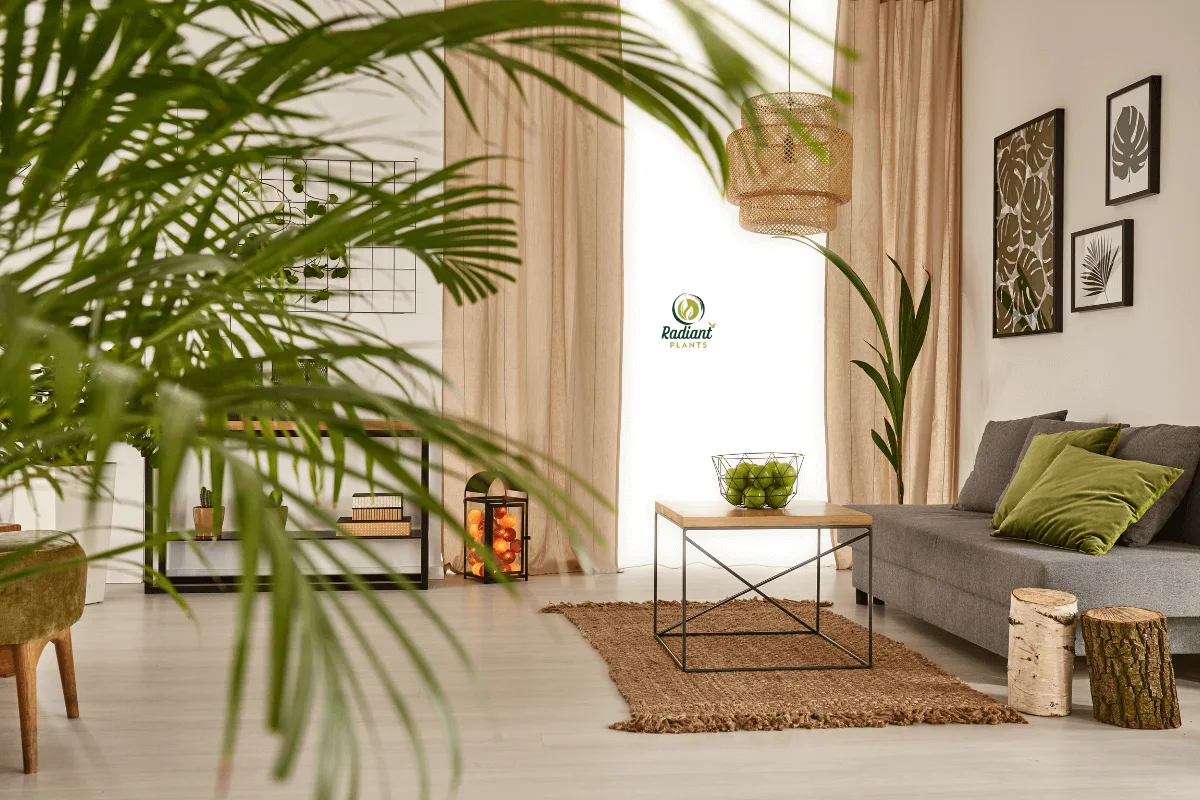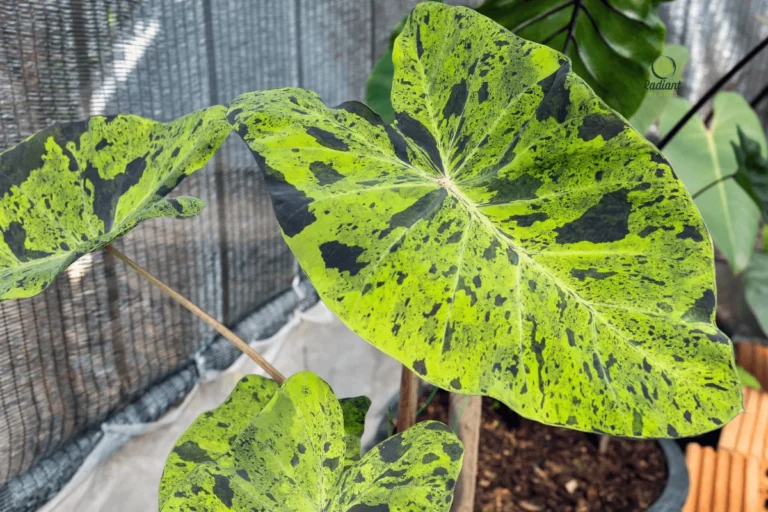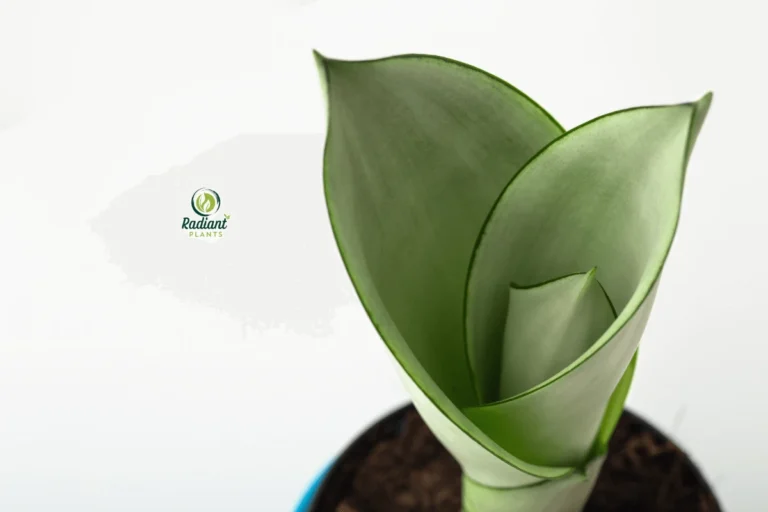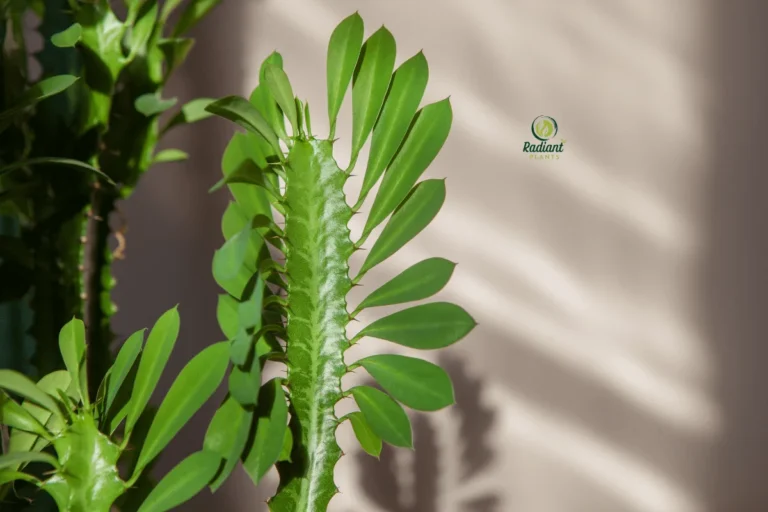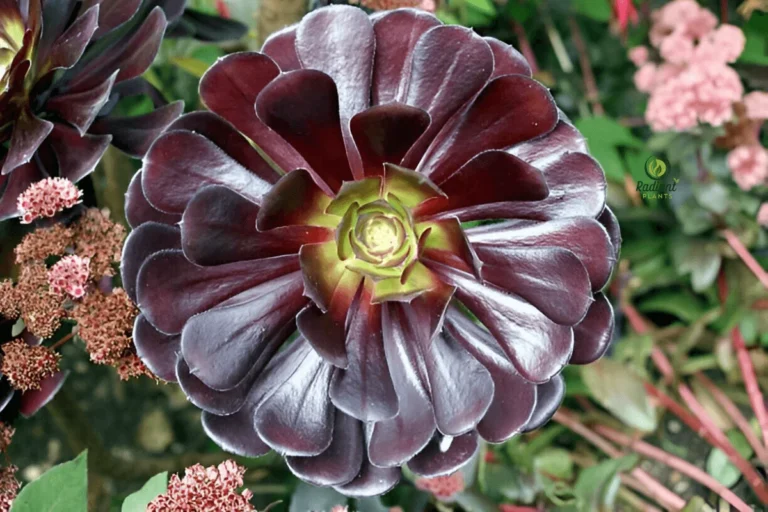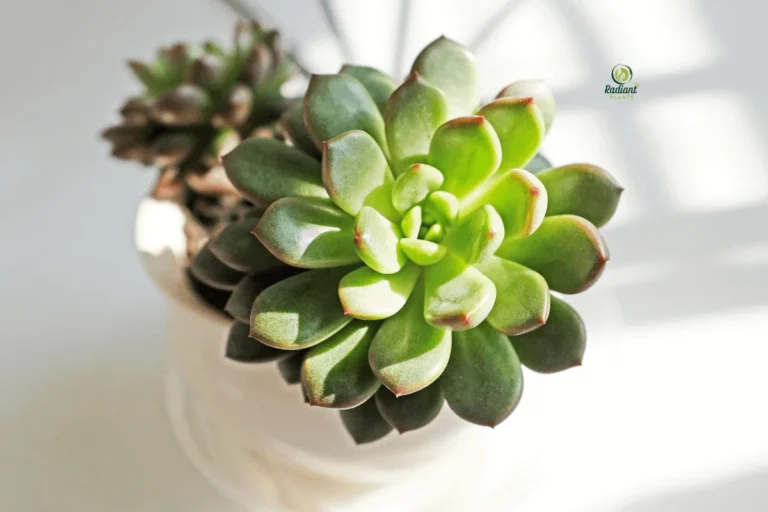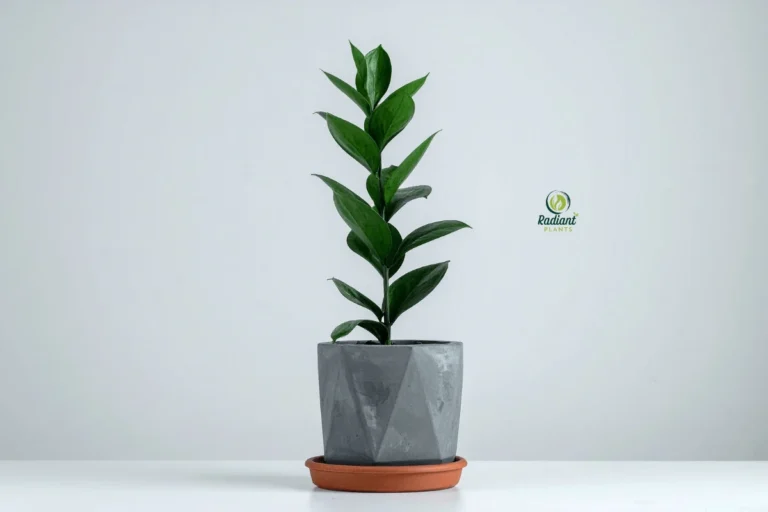Best Plants for Every Room: How to Pick 7 Perfect Ones
Your home feels lifeless. Empty corners mock you with their barren emptiness, while sterile walls whisper of missed opportunities for natural beauty. The tantalizing promise of lush greenery beckons, yet analysis paralysis strikes when faced with countless botanical choices. Here’s the revelation that changes everything: discovering the Best Plants for Every Room isn’t rocket science—it’s simply knowing which verdant companions thrive in your unique living sanctuary.
Picture this: sunlight dancing across emerald leaves in your living room, while air-purifying powerhouses work their silent magic in your bedroom. Envision aromatic herbs flourishing on your kitchen windowsill, transforming mundane meals into culinary adventures. This isn’t some far-fetched horticultural fantasy—it’s your imminent reality.
The secret lies in selecting seven extraordinary specimens that possess remarkable adaptability and forgiveness for novice plant parents. These botanical marvels don’t demand perfection; they reward your basic care with explosive growth, stunning foliage, and life-enhancing benefits that transform houses into homes.
Your transformation journey begins now. These carefully curated Best Plants for Every Room selections will revolutionize your living space, purify your air, and nurture your soul—all while being virtually foolproof for beginners and seasoned enthusiasts alike.
Table of Contents
Table of Contents
Why Finding the Best Plants for Every Room Matters for Your Home
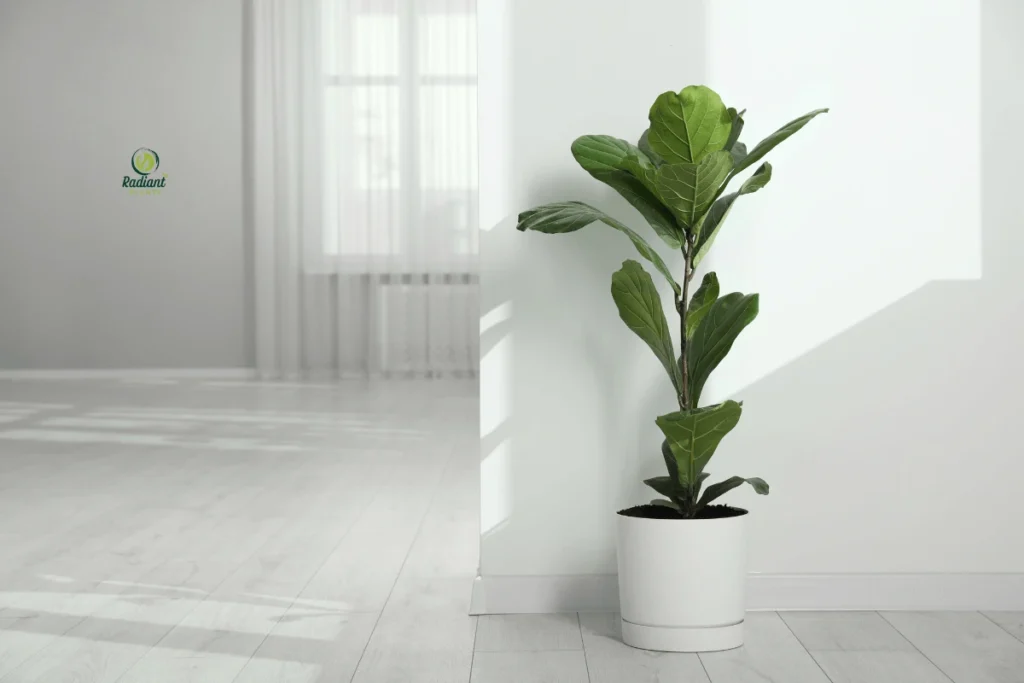
Adding plants to your living space isn’t just about following trends. When you choose the Best Plants for Every Room, you’re making a smart investment in your health, happiness, and your home’s value. Let’s explore why indoor plants are such game-changers.
Health Benefits of Indoor Plants
Indoor plants work like natural air filters in your home. They remove harmful chemicals and add fresh oxygen to your living spaces. Studies show that people feel less stressed and more focused when surrounded by greenery. Plants also help maintain healthy humidity levels, which can reduce dry skin and respiratory problems.
Many houseplants remove common indoor toxins like formaldehyde and benzene. This makes your home’s air cleaner and safer for your family. Plus, caring for plants gives you a sense of purpose and accomplishment that boosts your mood naturally.
Aesthetic Appeal and Home Value
The right plants make any room look more expensive and put-together. They add color, texture, and life to boring corners. Real estate experts say that well-placed plants can increase your home’s perceived value by making spaces feel larger and more welcoming.
Plants also help tie together your decorating style. Whether your home is modern, rustic, or somewhere in between, some houseplants complement your look perfectly. They’re like living artwork that changes and grows over time.
Air Quality Improvement
NASA research proves that certain houseplants can remove up to 87% of air toxins within 24 hours. This means cleaner air for you and your family to breathe every day. Plants also release moisture into the air, which helps combat the dry conditions caused by heating and cooling systems.
Better air quality leads to better sleep, fewer headaches, and improved overall health. It’s like having a natural air purifier that never needs replacement filters.
How to Choose the Best Plants for Every Room Based on Your Lifestyle

Not all plants work for every person or home. To find your perfect Best Plants for Every Room matches, you need to think about your lifestyle and living situation honestly.
Assessing Your Plant Care Experience Level
New to plants? Start with forgiving varieties that survive occasional neglect. These hardy plants won’t die if you forget to water them for a week or two. Look for plants labeled as “low maintenance” or “beginner-friendly.”
If you have some plant experience, you can try varieties that need a bit more attention. These might require specific watering schedules or particular light conditions. Advanced plant parents can handle finicky plants that need daily care and precise conditions.
Understanding Your Available Time for Plant Maintenance
Be honest about how much time you can dedicate to plant care each week. Some plants need daily attention, while others thrive with weekly check-ins. Consider your work schedule, travel frequency, and other commitments.
Busy people should choose drought-tolerant plants that forgive irregular watering. If you travel often, look for plants that can handle being left alone for extended periods. People with more free time can enjoy plants that need frequent care and attention.
Evaluating Your Home’s Natural Light Conditions
Light is the most important factor in plant success. Walk through your home and notice which areas get bright light, medium light, or stay pretty dark throughout the day. Most plants fall into one of these light categories.
South-facing windows get the brightest light, while north-facing windows receive gentle, indirect light. East and west windows fall somewhere in between. Match your plants to your available light for the best results.
Room-by-Room Guide to the Best Plants for Every Room
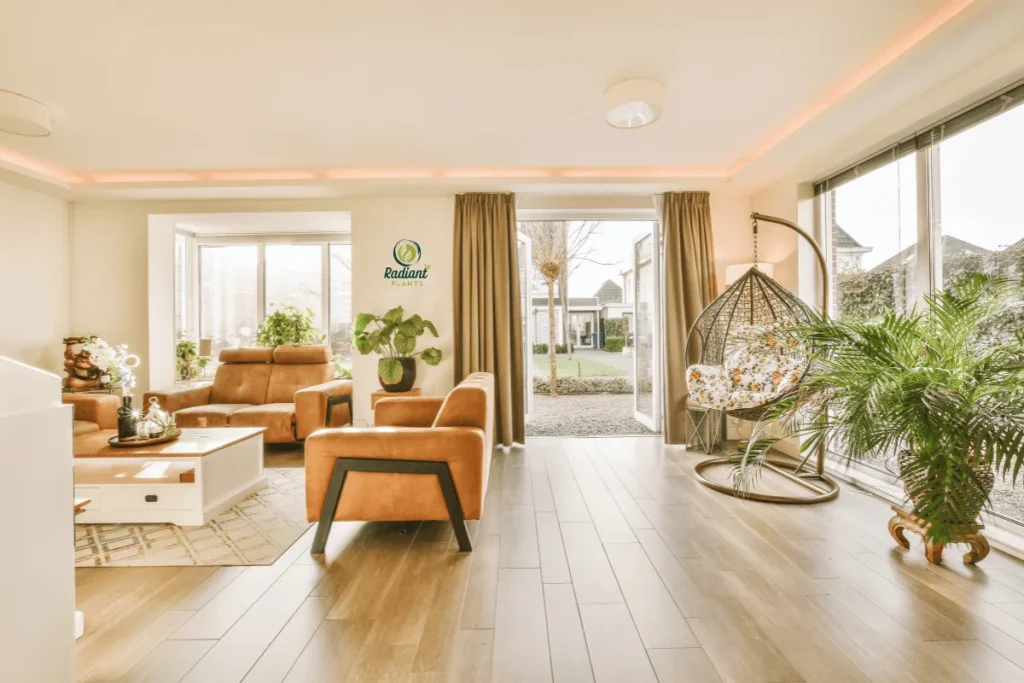
Different rooms in your home have different conditions. Here’s how to choose the Best Plants for Every Room based on each space’s unique environment.
Living Room Plants That Make a Statement
Your living room is often the largest space in your home, so it can handle bigger, more dramatic plants. This room usually gets good light and has stable temperatures, making it perfect for many plant varieties.
Low-light options:
- Snake plants work great in darker corners
- ZZ plants add modern style without needing bright light
- Pothos vines look beautiful trailing from shelves
Pet-friendly considerations:
- Spider plants are completely safe for cats and dogs
- Boston ferns add lush greenery without toxicity concerns
- Parlor palms create tropical vibes safely
Size and placement tips:
- Use large floor plants in empty corners
- Place medium plants on side tables or plant stands
- Hang trailing plants from the ceiling or high shelves
Bedroom Plants for Better Sleep
Your bedroom should feel calm and peaceful. The Best Plants for Every Room strategy for bedrooms focuses on plants that improve air quality and promote relaxation.
Air-purifying varieties:
- Snake plants release oxygen at night, unlike most plants
- Peace lilies remove harmful chemicals while you sleep
- Aloe vera plants clean the air and provide healing gel
Low-maintenance options:
- ZZ plants thrive in bedroom conditions with minimal care
- Pothos plants adapt to lower light bedrooms easily
- Rubber plants look elegant and need little attention
Space-saving solutions:
- Wall-mounted planters save floor space
- Bedside table plants add greenery without taking up room
- Hanging plants work great in small bedrooms
Kitchen Plants That Love Humidity
Kitchens tend to be warm and humid from cooking activities. Many plants love these conditions, making your kitchen perfect for certain varieties.
Herb gardens for cooking:
- Basil, mint, and parsley grow well on sunny windowsills
- Rosemary and thyme add fresh flavors to your meals
- Chives and oregano provide year-round seasoning
Heat-tolerant varieties:
- Pothos plants handle kitchen heat beautifully
- Spider plants thrive in warm, humid conditions
- Peace lilies love the extra moisture from cooking
Compact growing options:
- Windowsill herb gardens maximize limited space
- Small succulents fit perfectly on countertops
- Hanging planters keep plants away from cooking areas
Bathroom Plants That Thrive in Moisture
Bathrooms offer unique growing conditions with high humidity and often lower light. The right plants love these spa-like conditions.
High-humidity lovers:
- Boston ferns thrive in steamy bathroom air
- Peace lilies bloom beautifully in humid conditions
- Snake plants handle bathroom moisture perfectly
Low-light performers:
- ZZ plants grow well in windowless bathrooms
- Pothos vines trail beautifully in dim bathroom light
- Cast iron plants live up to their tough reputation
Shower-safe selections:
- Air plants can hang directly in the shower area
- Orchids love the humidity but need protection from direct water
- Bamboo plants create a zen vibe in wet conditions
The 7 Perfect Plants That Work as the Best Plants for Every Room
These seven plants earn the title of Best Plants for Every Room because they adapt to different conditions and forgive beginner mistakes. Each one brings something special to your home.
Plant Name | Light Needs | Water Frequency | Special Features |
|---|---|---|---|
Snake Plant | Low to bright | Every 2-3 weeks | Releases oxygen at night |
Pothos | Low to medium | Weekly | Fast-growing, easy to propagate |
ZZ Plant | Low to medium | Every 2-4 weeks | Extremely drought tolerant |
Peace Lily | Medium | Weekly | Beautiful white flowers |
Rubber Plant | Medium to bright | Weekly | Large, glossy leaves |
Spider Plant | Medium | Weekly | Safe for pets, produces babies |
Monstera | Medium to bright | Weekly | Instagram-famous split leaves |
Plant 1: Snake Plant (Sansevieria)
Snake plants earn their spot as one of the Best Plants for Every Room because they’re nearly indestructible. These upright plants have thick, sword-like leaves that store water for weeks.
Care requirements: Snake plants need very little water, only when the soil is completely dry. They prefer bright light but survive in dark corners. These plants hate overwatering more than neglect, so err on the dry side.
Room compatibility: Snake plants work everywhere from bedrooms to bathrooms. They’re perfect for offices, living rooms, and even dark hallways. Their upright growth makes them great for tight spaces.
Why it’s perfect for beginners: You can forget about snake plants for weeks, and they’ll be fine. They don’t need fertilizer, rarely get pests, and survive in almost any light condition. It’s almost impossible to kill them with neglect.
Plant 2: Pothos (Epipremnum aureum)
Pothos plants are like the golden retrievers of the plant world – friendly, adaptable, and always happy to see you. These trailing vines grow fast and look beautiful in any room.
Versatility across rooms: Pothos plants adapt to different light levels, making them perfect for any space. They trail beautifully from shelves, climb up poles, or sprawl across tables. You can even grow them in water instead of soil.
Propagation benefits: Cut a piece of pothos vine and stick it in water – it’ll grow roots in days. This means you can create new plants for free and share them with friends. One pothos can become dozens over time.
Light adaptability: While pothos prefer medium light, they survive in darker areas too. The leaves might lose some color in low light, but the plant stays healthy. This flexibility makes them perfect for any room.
Plant 3: ZZ Plant (Zamioculcas zamiifolia)
ZZ plants look like they belong in a modern art museum. Their glossy, dark green leaves catch light beautifully and add instant sophistication to any space.
Drought tolerance: ZZ plants store water in their roots and stems, so they can go a month or more without watering. This makes them perfect for forgetful plant parents or frequent travelers.
Low-light performance: These plants prefer medium to low light conditions. Bright direct sunlight can burn their leaves, so they’re perfect for offices or rooms without big windows.
Modern aesthetic appeal: ZZ plants have a clean, architectural look that complements contemporary decor. Their upright growth and glossy leaves make them living sculptures that never go out of style.
Plant 4: Peace Lily (Spathiphyllum)
Peace lilies bring elegance and flowers to your indoor garden. These plants produce beautiful white blooms that last for weeks, adding a touch of luxury to any room.
Flowering indoor plant: Unlike most houseplants, peace lilies produce gorgeous white flowers several times a year. The blooms emerge as green buds, turn bright white, then gracefully fade to green again.
Air purification qualities: NASA lists peace lilies as one of the top air-purifying plants. They remove common household toxins and add humidity to dry indoor air. This makes them perfect for bedrooms and living areas.
Humidity preferences: Peace lilies love humid conditions, making them perfect for bathrooms or kitchens. If your home is dry, place them on pebble trays filled with water to increase local humidity.
Plant 5: Rubber Plant (Ficus elastica)
Rubber plants make bold statements with their large, glossy leaves. These plants can grow into impressive trees indoors, creating dramatic focal points in any room.
Statement plant qualities: With their burgundy-tinted new growth and massive leaves, rubber plants command attention. They work as living artwork that grows and changes over time.
Growth management: You can keep rubber plants small with regular pruning or let them grow into room-filling trees. They respond well to shaping and can be trained into different forms.
Light requirements: Rubber plants prefer bright, indirect light but adapt to medium light conditions. Their leaves stay glossiest and most colorful in brighter spots, but they won’t die in dimmer areas.
Plant 6: Spider Plant (Chlorophytum comosum)
Spider plants are perfect for homes with pets and kids. These cheerful plants produce baby plants that dangle like spiders from the mother plant, creating a playful, cascading effect.
Easy propagation: Spider plants do the propagating work for you by producing baby plants on long stems. You can root these babies in water or soil to create new plants instantly.
Pet-safe option: Unlike many houseplants, spider plants are completely non-toxic to cats and dogs. Pet parents can enjoy beautiful plants without worrying about their furry family members.
Air-cleaning abilities: Spider plants remove formaldehyde and xylene from indoor air. They work especially well in kitchens and bathrooms, where these chemicals might be present from cleaning products.
Plant 7: Monstera Deliciosa
Monstera plants have become Instagram celebrities thanks to their dramatic split leaves. These tropical beauties bring jungle vibes to any room and grow into impressive specimens over time.
Instagram-worthy appeal: The distinctive split leaves of mature monsteras create a stunning visual impact. Young plants start with solid leaves that develop splits and holes as they mature, giving you an ever-changing display.
Growth patterns: Monstera are natural climbers that appreciate support poles or trellises. They can grow quite large indoors, making them perfect statement plants for spacious rooms.
Support requirements: Provide a moss pole or wooden stake for your monstera to climb. This encourages larger leaves and more dramatic splits. Without support, the plant stays smaller with less impressive foliage.
Essential Care Tips for Maintaining the Best Plants for Every Room
Once you’ve chosen your Best Plants for Every Room, proper care keeps them healthy and beautiful. These universal tips work for most houseplants and help prevent common problems.
Watering Schedules and Techniques
The biggest mistake new plant parents make is overwatering. Most houseplants prefer to dry out slightly between waterings. Stick your finger into the soil – if it’s dry an inch down, it’s time to water.
Water thoroughly until it drains from the bottom holes, then empty the saucer after 30 minutes. This ensures the roots get enough water without sitting in soggy soil. Most plants need water weekly during the growing season and less in winter.
Watering Schedule Guide:
Plant Type | Watering Frequency | Soil Moisture Check |
|---|---|---|
Succulents | Every 2-3 weeks | Completely dry |
Snake Plants | Every 2-3 weeks | Completely dry |
ZZ Plants | Every 3-4 weeks | Completely dry |
Pothos | Weekly | Top inch dry |
Peace Lily | Weekly | Top inch dry |
Rubber Plant | Weekly | Top inch dry |
Spider Plant | Weekly | Top inch dry |
Monstera | Weekly | Top inch dry |
Light Requirements and Positioning
Understanding light levels helps you place plants correctly. Bright light means direct sunlight for several hours daily. Medium light is bright but indirect, like near a window but not in the sun’s path. Low-light areas stay dim throughout the day.
Rotate your plants weekly so all sides get equal light. This prevents them from leaning toward the light source. If plants stretch toward windows or lose color, they need more light.
Move plants gradually when changing their location. Sudden light changes can shock plants and cause leaf drop. Adjust locations slowly over a week or two for best results.
Fertilizing and Seasonal Care
Feed your plants during spring and summer when they’re actively growing. Use a balanced liquid fertilizer diluted to half strength once monthly. Most plants don’t need fertilizer in fall and winter when growth slows.
Watch for signs of overfertilizing, like brown leaf tips or white crusty deposits on the soil. When in doubt, fertilize less rather than more. Healthy soil often provides enough nutrients for slow-growing houseplants.
Adjust care seasonally – plants need less water and no fertilizer during winter months. Many plants also appreciate slightly cooler temperatures in winter to rest properly.
Common Problems and Solutions
Yellow leaves usually mean overwatering or natural aging. Check soil moisture and adjust watering accordingly. Remove yellow leaves to keep plants looking tidy.
Brown leaf tips often indicate low humidity or fluoride in tap water. Use filtered water and increase humidity with pebble trays or humidifiers.
Drooping leaves can mean underwatering or overwatering. Check soil moisture to determine which problem you’re facing, then adjust care accordingly.
Pests like spider mites or aphids respond well to gentle soap spray. Mix a few drops of dish soap in water and spray affected areas weekly until pests disappear.
HOUSEPLANT CARE TIPS FOR BEGINNERS
Budget-Friendly Ways to Get Started with the Best Plants for Every Room
You don’t need to spend a fortune to fill your home with the Best Plants for Every Room. Smart shopping and propagation can build your plant collection affordably.
Where to Buy Quality Plants
Local nurseries often have healthier plants than big box stores, and staff can provide valuable care advice. Many nurseries also guarantee their plants for a short period.
Online plant retailers ship healthy plants nationwide, often with a better variety than local stores. Read reviews and check return policies before ordering plants online.
Plant swaps and community groups let you trade plants with other enthusiasts. Many cities have Facebook groups or meetups where people share cuttings and plants.
Budget Shopping Tips:
- Buy smaller plants that will grow rather than large specimens
- Look for end-of-season sales at garden centers
- Check the clearance sections for plants that need minor care
- Ask friends and family for cuttings from their plants
Propagation Methods to Expand Your Collection
Many of the Best Plants for Every Room can be propagated easily at home. This means you can create new plants for free from ones you already own.
Water propagation works for pothos, spider plants, and many other vines. Cut a healthy stem and place it in water. Change the water weekly until roots develop, then plant in soil.
Division works for snake plants and spider plants. Carefully separate the root system into smaller sections, making sure each piece has roots and leaves.
Leaf propagation works for some succulents and begonias. Remove healthy leaves and place them on moist soil. New plants will grow from the base of the leaves.
DIY Planters and Accessories
Creative containers can house your plants without breaking the budget. Make sure any container has drainage holes or add a layer of gravel at the bottom.
Repurposed containers:
- Old ceramic bowls or mugs make charming small planters
- Wooden crates work great for multiple small plants
- Glass jars show off root systems for water-grown plants
- Woven baskets add texture when lined with plastic
Homemade plant stands:
- Stack books or wooden crates to create height differences
- Use plant saucers to protect furniture from water damage
- Repurpose ladder shelves for vertical plant displays
- Create hanging planters from macrame or rope
FAQs About Best Plants for Every Room
Which plants from the Best Plants for Every Room list are safest for pets?
Spider plants are completely non-toxic to pets, making them the safest choice. Snake plants and ZZ plants should be kept away from pets as they can cause stomach upset if eaten. Always research plant toxicity before bringing new plants home with pets.
How do I know if I’m choosing the Best Plants for Every Room in my specific home?
Consider your home’s light levels, humidity, and temperature. Match plants to these conditions rather than forcing plants into unsuitable spots. The Best Plants for Every Room work because they adapt to various conditions, but they still have preferences.
Can the Best Plants for Every Room survive in apartments with limited natural light?
Yes! Snake plants, ZZ plants, and pothos from our Best Plants for Every Room list thrive in low-light conditions. You can also supplement with grow lights if your apartment is very dark.
How often should I repot the Best Plants for Every Room?
Most of these plants need repotting every 1-2 years when they outgrow their containers. Signs include roots growing through drainage holes or soil drying out very quickly after watering.
What’s the biggest mistake people make when starting with the Best Plants for Every Room?
Overwatering is the number one killer of houseplants. Most beginners water too frequently because they want to help their plants. Remember that most plants prefer to dry out slightly between waterings.
Conclusion: Transform Your Home with the Best Plants for Every Room
Creating a plant-filled home doesn’t have to be complicated or expensive. The Best Plants for Every Room we’ve covered – snake plants, pothos, ZZ plants, peace lilies, rubber plants, spider plants, and monstera – give you everything you need to start your indoor garden journey.
These seven plants adapt to different rooms, forgive beginner mistakes, and grow beautifully with basic care. They’ll clean your air, boost your mood, and make your home more welcoming for years to come.
Remember that plant parenthood is a journey, not a destination. Start with one or two plants that match your lifestyle and space. As you gain confidence and experience, you can expand your collection with more varieties.
Your home deserves the beauty, health benefits, and joy that come with the Best Plants for Every Room. Don’t wait for the perfect moment or worry about making mistakes. Choose your first plant today and begin transforming your living space into the green oasis you’ve always wanted.
Ready to start your plant journey? Pick one plant from our Best Plants for Every Room list that sounds perfect for your space and lifestyle. Visit your local nursery this weekend, or order online to begin creating your indoor paradise. Your future self will thank you for taking this green step toward a healthier, more beautiful home.

